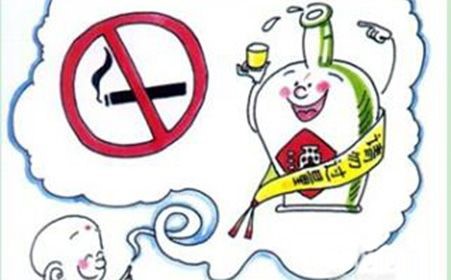This article reprints from Listening To Suining
In China, the number of new cases of oral cancer amounts to 48,100 per year, and the number of cases related to death due to oral cancer reaches 22,000. It is quite common in Hunan and Suining, in which buccal occurs most. The mortality rate of oral cancer is relatively high. In the United States, one person dies every hour because of it. The National Cancer Institute estimates that nearly 48,330 Americans will be diagnosed with oral cancer and laryngocarcinoma annually, with an average age of 62 years. Today, we have an honor to invite Jia Baolin, a resident of the Oral and Maxillofacial Head and Neck Surgery Center of the Suining Central Hospital, to talk about the topic of " Early detection and early treatment for oral cancer".

Our honored guest.

Jiabaolin, a resident of the Oral and Maxillofacial Head and Neck Surgery Center of the Suining Central Hospital.
What is oral cancer?
Oral cancer is a general term for malignant tumors that occur in the mouth. Most of them are squamous cell carcinomas (SCC), which are malignant changes in the oral mucosa. In clinical practice, oral cancer includes gingival cancer, tongue cancer, soft and hard sputum cancer, jaw cancer, oral cancer, oropharyngeal cancer, salivary gland cancer, lip cancer, and maxillary sinus cancer, as well as facial skin cancer. It is one of the more common malignant tumors of the head and neck.

What factors can cause cancer?

Smoking, drinking, and chewing betel nut are risky factors for oral cancer, but the exact pathogenic factor of oral cancer is still unclear. In addition, poor oral hygiene, local chronic stimulation (such as sharp roots, cusps, tooth rims, inappropriate dentures, etc.), viral infections, etc., are also associated with oral cancer. We recommend to get rid of the bad habits, stop smoking or drinking, stop chewing betel nut, and form good oral hygiene habits to remove local chronic stimulation. Because the cause of oral cancer is unknown, there are many young people who do not have the bad hobbies and care about their oral hygiene also suffer from oral cancer. Therefore, we must pay attention to prevention as well as the early detection and early treatment. Most oral cancers are located in the superficial position of the mouth, and the patient can feel, see and even touch them. If they can be treated in time, the cure rate is relatively high (the cure rate of early patients can be as high as 95% or more), and the complications of treatment are fewer, the sequelae are smaller, and the cost is lower.
What are the manifestations of oral cancer?
There are five common clinical manifestations of oral cancer. 1. Long-lasting ulcers: The ulcers are fixed in position and they can not be healed after two weeks (except the removal of trauma and other factors). 2. Gradually expanding hyperplasia: Cauliflower-shapen is a particular one, and some also have excessive granulation tissue, bumps induration, swelling, and lumps. If there is cervical lymph node metastasis in oral cancer present as neck mass. Here we want to emphasize that the neck mass, especially the painless mass, should be taken seriously by us. Many of them are metastatic carcinoma of the mouth or other parts of the body. When finding painless mass, we must go to the oral and maxillofacial head and neck surgery to check immediately. 3.The change of mucous membrane color: The mucous membrane may become white, red, black or blue oral mucosal plaques or lumps, but it doesn't have some apparent symptoms 4.Varying degrees of pain: Generally the pain is positionable, tolerable, persistent and it is milder than the toothache. Pain may be increased when we eat and speak, and temperatures changes can not aggravate the pain. 5. Loose of single teeth: If the loosening of single teeth is not caused by periodontal disease and occlusion trauma after examination by a dentist, it may be caused by oral cancer. In addition, limitation of mouth opening (excluding inflammation caused by wisdom teeth and temporomandibular joint disorders), oral bleeding (excluding gingivitis, periodontal disease), and dyskinesia of the tongue (such as have difficulty in stretching the tongue, skewing, speaking or swallowing ), long-term wearing dentures, unsuitable dentures , etc., can also be caused by oral cancer.
Whether ever-lsting oral ulcers can be transformed into cancer?

The first thing is to figure out the precancerous condition. Some oral cancers develop from oral mucosal precancerous lesion or precancerous lesions which include leukoplakia, erythema, OSF, verrucous hyperplasia, and lichen planus(OLP). The clinical manifestations are long-term oral mucosal ulcers and changes of oral mucosal color. These precancerous lesions or conditions are not cancers themselves, but may develop into cancers. If The symptoms are mild and long-term, patients are easily to adopt to them; the doctors will also tell them that "it will not be cancer." Precancerous lesions or conditions can unconsciously transform into oral cancer. Many patients have missed the opportunity of early treatment when they come to see a doctor. Therefore, unilocular and focal precancerous lesions are recommended for surgical resection. Multilocular or large-scale precancerous lesions should be closely monitored by specialist. Some patients are very careful. They ask their families to take photos of dynamic comparison and tracks with a digital camera or mobile phone monthly. They alterly discover the early canceration and save the best optimal time.
Can oral cancer be operated on?
Some hesitation is fatal, we should consult the doctor immediately when we find any changes in the mouth, face, neck, or monitor of pre-cancerous lesions such as leukoplakia, erythema, etc. General speaking, dentists can distinguish common oral diseases and oral cancer. If it is an oral cancer, the patient needs to go oral and maxillofacial head and neck Surgery department. The professional physician will assess the lesion. Patients should follow the physician's advice and do not hesitate when the lesion is a suspect caner. Patients will hesitate when the two conditions occur. One is they hesitate to diagnose. The diagnosis of oral cancer must rely on biopsy. Because the early oral cancer is mild, although it has been reminded, or the doctor has told them that it may develop into cancer, but many patients doubt the doctor's judgment, especially after hearing that the outcome can only be confirmed after the surgery. The second is they hesitate to take health care. After pathological diagnosis, some patients are afraid of surgery and expect to have a conservative treatment. After two hesitations, the cancer is severer, the pain and the threat are worse, at that time will they make up their minds to receive treatment. After two hesitations, as well as the time spend on finding a doctor and a bed, the oral cancer has become from early to fatal one.
Can patients eat and talk after surgery?
The effect of early treatment is small, and the late treatment is kind of late. The oral cancer should be operated by surgery, and postoperative radiotherapy or chemotherapy can be added if it is necessary. The earlier the treatment of oral cancer, the better effect it will have. Taking surgery as an example, oral cancer surgery mainly involves primary resection, cervical lymph node dissection, defect repair and reconstruction. In the early stage, as long as the primary lesion is directly removed, it does not affect eating and talking at all. If you miss early treatment, don't give up. Surgical treatment usually involves neck dissection, if the issues have been confirmed being invaded by the cancer cells, we need to add radiotherapy. In addition, the size of the primary tumor, the safety range of surgical resection, and the thickness of the cancer are also factors which should be considered for postoperative adjuvant radiotherapy. If you have hesitated and delayed for a long time, at this time, you have to make up your mind and ask doctors if there is a last chance. The repair and reconstruction technology have made gratifying progress in decades, and the vascularized free tissue flap transplantation is quite mature. Even after the long-term oral cancer surgery with large cancerous lesions, there is still a hope to have a good appearance, as well as the ability to eat, swallow and chew.
How to prevent it and make self-inspection?
In Suining, many patients are suffering from oral cancer which is caused by bad prostheses in the mouth. Many patients suffer from a long-term traumatic ulcer by putting active dentures, porcelain teeth, etc., In addition, the lack of effective treatment will lead it to cancer, so it is recommended that everyone should go to the regular stomatological hospital when making dentures. Another reason is chewing betel nut. Now more and more young people like to chew betel nut but chewing betel nut can cause oral cancer. I hope that everyone can get rid of these bad habits and I also want to introduce some methods for self-examination. We can check our oral cavity in the mirror by the following six steps: Step 1: Wipe the tongue with gauze, stretch the tongue as much as possible, check if there are white or red patches on the two sides and the back of the tongue, whether there is a lump. Attention: The above-mentioned sites are the most common cancerous sites for oral cancer who are non-smokers. Step 2: Check the lips and buccal mucosalips to find wherther there are lumps or abnormal protrusions in the above areas, and whether there are abnormal white or red areas. Step 3: Check whether there is a lump or white and red marking on the top and bottom tongue. Step 4: Check whether there is a lump on the top of the mouth and a softened area on the hard palate. Check whether there are white or red markings on the above places. Step 5: If there are enlarged lymph nodes in the neck, it may indicate a more serious disease. Step 6: Check the tonsils, press the tongue with the dental reflector, check whether the tonsils are symmetrical, enlarged, reddened or have abnormal protrusions.
Summary: Oral cancer spreads fast and has an significant negative effect, but as long as we follow the scientific method to prevent it in time, make oral examination periodically, it is likely to prevent the oral cancer.





